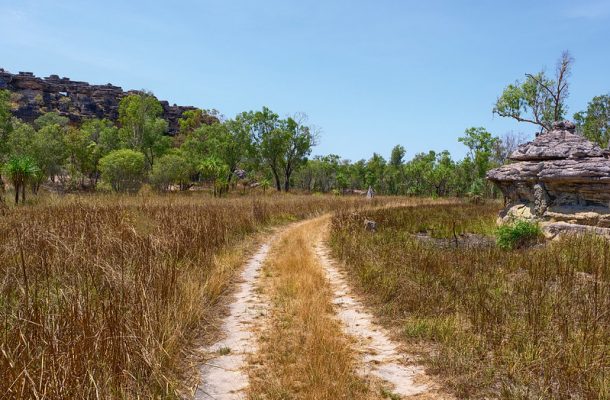Reaping the social benefits of carbon farming in northern Australia

Nation-building can drive economic prosperity, social cohesion and resilience, but we need to engage with the complexity of our modern world to develop pragmatic solutions that address several issues. The temptation to rate one priority higher than another is strong, but we need to avoid binary choices. When it comes to climate policy, that can be challenging.
We’re seeing this now in Australia with the debate about committing to a net-zero emissions target by 2050. Despite support for the target from states and territories and the Business Council of Australia’s recent proposal for more ambitious 2030 targets, we’re still debating targets rather than focusing on how we should make the transition away from fossil fuels.
Whatever the target, we need to pursue a range of whole-of-community, cross-sector transition strategies. Carbon farming is one of the many approaches already being used.
Carbon farming refers to agricultural or land management practices that reduce greenhouse gas emissions by capturing carbon in vegetation or soils or minimising emissions. The carbon credits generated from carbon farming can be used to offset emissions generated in other activities. Credits can be transferred through a commercial transaction to organisations seeking to offset their carbon generation. Eligible projects include activities related to vegetation management, agriculture, energy consumption, waste, transport, coal and gas production, and industrial processes.
Extensive effort to develop accounting and management methodologies to support carbon farming is paying off. Around 700 carbon farming projects are underway across Australia that together have reduced emissions by about 60 million tonnes or around 10% of Australia’s total emissions. And an increasing number of projects are being established in northern Australia.
The Carbon Credits (Carbon Farming Initiative) Act 2011 provides farmers, pastoralists, forest growers and landholders with opportunities to generate credits that can be traded in domestic and overseas carbon markets.
Given the scale and location of the Defence Department’s landholdings, there’s significant potential for the defence organisation to engage more actively with carbon farming. Defence emits around 1.6 million tonnes of carbon dioxide equivalent per year, which is more than half of all federal government emissions. Around 50% of Defence’s emissions come from the defence estate. In a recent Strategist article, Michael Thomas and Anthony Bergin suggested that Defence ‘undertake an audit of its estate for carbon offsetting and sequestration opportunities’.
The NT government has declared its intent to transition to a low-carbon economy and has set a target of net-zero emissions by 2050. Carbon offsets are expected to support achievement of the target as part of a broader emissions reduction strategy. While the voluntary carbon credit market under the Northern Territory Aboriginal Carbon Strategy is smaller than the federal government’s Emissions Reduction Fund, it is expected to grow and contribute to emissions reductions, particularly through fire management on savannahs.
The Aboriginal Carbon Foundation estimates that there are 55 savannah projects underway in the north which have generated $20 million in carbon credits, with around $112 million in carbon credits contracted under the Emissions Reduction Fund. These projects aim to reduce greenhouse gas emissions through a strategic fire management program focused on early-season burning and ‘cool’ planned burns, which generate relatively low greenhouse gas emissions. The intent is to prevent or reduce the scale of unplanned and more destructive late-season fires, which generate higher greenhouse gas emissions.
Indigenous communities in the north are embracing carbon farming—not as a binary option but to generate community income, increase local employment and develop local skills and, equally important, to enhance people’s connections with the land and build a socially engaged community.
But the results are mixed for farmers and pastoralists and the benefits for their communities are not as clear. While carbon farming allows individual landholders to establish a more reliable income stream by storing carbon in vegetation and trees, it is having a negative impact on the sustainability of local communities.
Queensland’s Paroo Shire has been in the spotlight in recent months because of the negative impacts that carbon farming in the shire is having on local communities. By the end of 2020, Paroo’s 47 carbon farms had earned more than $40 million and the region expects to generate around $230 million over the coming decade.
The concern is that corporations are buying up large landholdings and not contributing to the local community by generating local jobs, keeping families in the area or supporting local businesses. There’s also debate about adverse environmental impacts that some Paroo farmers say were caused by an increasing wild dog population.
In contrast, the Budjiti Aboriginal Corporation in southwest Queensland is embracing carbon farming as a means of regenerating the environment, creating income for traditional owners and returning to traditional land management practices.
As the NT government develops its broader policy to guide the application and administration of carbon offsets, it should take communities’ recent experiences of carbon farming into account to ensure that the economic, social and resilience benefits are optimised.
Carbon farming is producing economic benefits and is offsetting our carbon footprint. The challenge is to ensure that other benefits are achieved by weighting economic, social and resilience effects equally. Carbon farming could represent a form of nation-building that drives sustainable economic, social and environmental outcomes at the regional level. But we need to avoid binary choices if we are serious about transitioning to a net-zero emissions world.
This article was published by The Strategist.
Gillian Savage is the Deputy Director of Professional Development and has extensive experience in business and people strategy, organisational capability and digital transformation.














